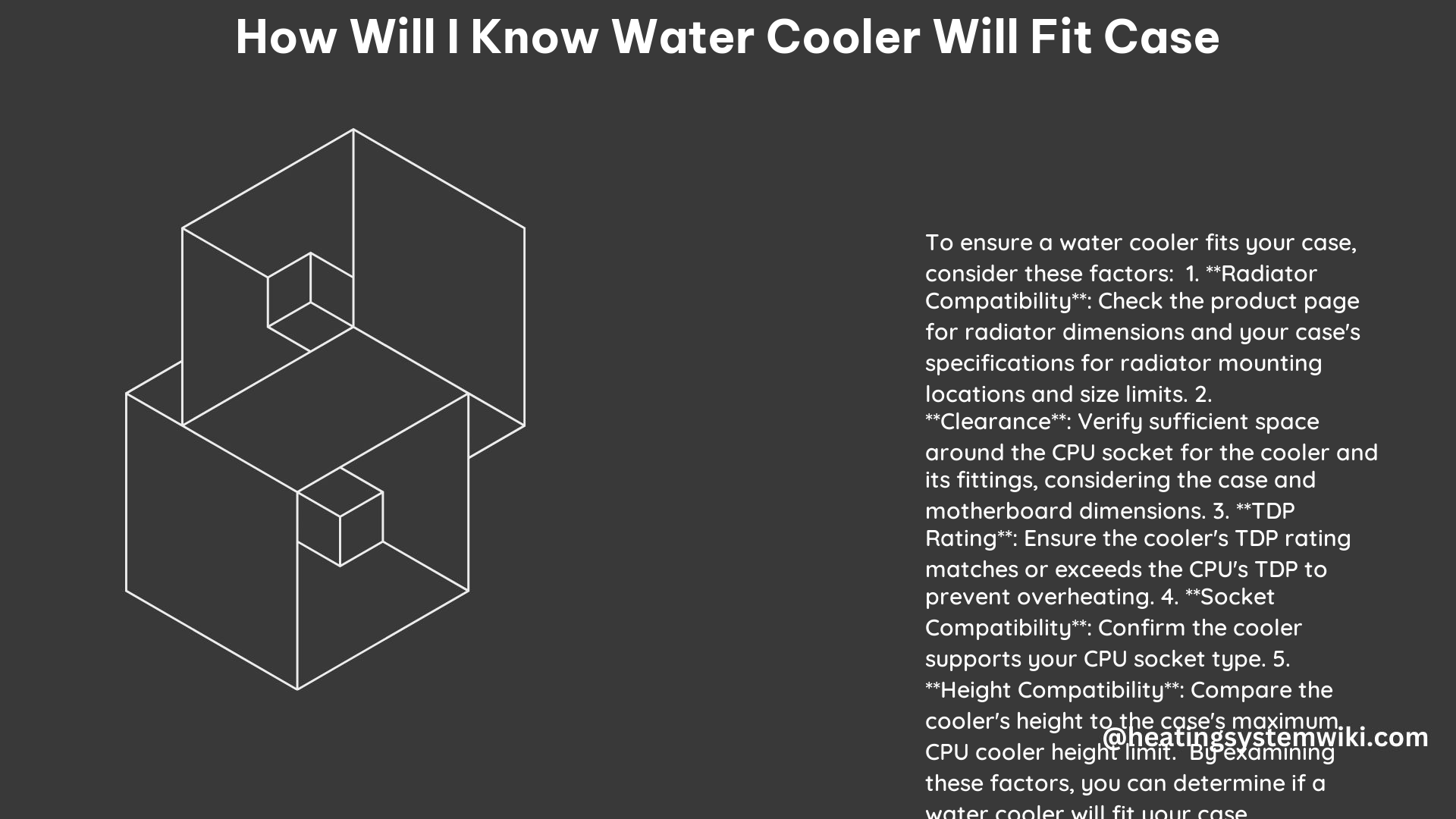When it comes to building or upgrading a PC, ensuring that the water cooler you choose will fit inside your computer case is a crucial consideration. The compatibility between the water cooler and the case can make or break your system’s cooling performance and overall aesthetics. In this comprehensive guide, we’ll dive deep into the various factors you need to consider to ensure a perfect fit between your water cooler and computer case.
Determining the Water Cooler Size
The first step in ensuring a water cooler will fit your case is to measure the available space inside your computer case. This includes the height, width, and depth of the case, as well as the clearance around the CPU socket area. Water coolers come in a variety of sizes, and it’s essential to match the dimensions of the cooler with the available space in your case.
Most water coolers will provide the following dimensions in their product specifications:
| Dimension | Typical Range |
|---|---|
| Radiator Size | 120mm, 240mm, 280mm, 360mm |
| Radiator Thickness | 25mm to 60mm |
| Fan Size | 120mm, 140mm |
| Overall Height | 50mm to 200mm |
It’s crucial to compare these dimensions with the clearance specifications of your computer case, which can be found in the case’s product documentation or on the manufacturer’s website.
Checking the Mounting Compatibility

In addition to the physical size of the water cooler, you also need to ensure that the mounting mechanism is compatible with your motherboard’s CPU socket. The most common CPU socket types are:
- Intel: LGA 1200, LGA 1151, LGA 2066, LGA 2011-v3
- AMD: AM4, sTRX4, TR4
Water coolers are designed to be compatible with specific socket types, so you’ll need to match the socket type of your CPU with the compatible mounts provided by the water cooler manufacturer. This information can typically be found in the product specifications or on the manufacturer’s website.
Evaluating the Thermal Design Power (TDP)
The Thermal Design Power (TDP) of your CPU is another crucial factor to consider when selecting a water cooler. TDP is a measure of the maximum amount of heat that the CPU cooler needs to dissipate, and it’s essential to choose a water cooler that can handle the TDP of your CPU.
Most modern CPUs have a TDP ranging from 65W to 105W, but some high-end or overclocked CPUs can have a TDP of up to 250W. It’s important to match the TDP rating of the water cooler with the TDP of your CPU to ensure optimal cooling performance and prevent thermal throttling or damage to your CPU.
Checking the Clearance Requirements
In addition to the overall size of the water cooler, you also need to consider the clearance requirements around the CPU socket area. Some water coolers, particularly large air coolers or thick radiators, may interfere with other components on your motherboard, such as RAM modules or PCIe slots.
It’s essential to check the clearance specifications of both the water cooler and your computer case to ensure that there is enough space for the cooler to be installed without any interference. This information can typically be found in the product documentation or on the manufacturer’s website.
Evaluating the Radiator Mounting Options
Water coolers can be mounted in various locations within your computer case, such as the front, top, or rear. The mounting options available will depend on the size and layout of your case, as well as the specific requirements of the water cooler.
Some cases may have dedicated mounting points or brackets for water cooler radiators, while others may require more creative installation solutions. It’s important to review the case’s specifications and the water cooler’s mounting requirements to ensure a secure and stable installation.
Considering the Tube Length and Routing
The length and routing of the water cooler’s tubing can also be a factor in determining compatibility with your computer case. Longer tubing may be necessary if the water cooler’s radiator is mounted in a different location than the CPU block. Additionally, the tubing’s flexibility and routing options can impact the overall layout and aesthetics of your build.
When selecting a water cooler, be sure to review the tubing length and routing options to ensure that it will work with the layout of your computer case.
Conclusion
Ensuring that a water cooler will fit your computer case is a critical step in building or upgrading a PC. By considering the size, mounting compatibility, TDP, clearance requirements, radiator mounting options, and tubing length, you can make an informed decision and avoid any compatibility issues. By following the guidelines outlined in this comprehensive guide, you can be confident that your water cooler will seamlessly integrate with your computer case for optimal cooling performance and a clean, professional-looking build.
References:
– How to check CPU cooler compatibility – Overclockers UK
– How can you tell if a liquid cooler will fit in your pc? – Tom’s Hardware Forums
– How can you check whether a cpu cooler fits in a case or not? – Reddit
